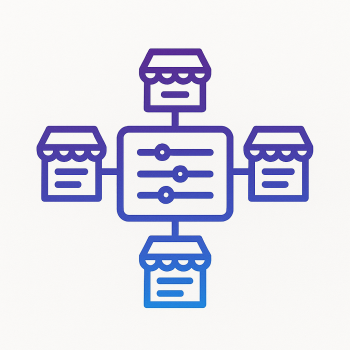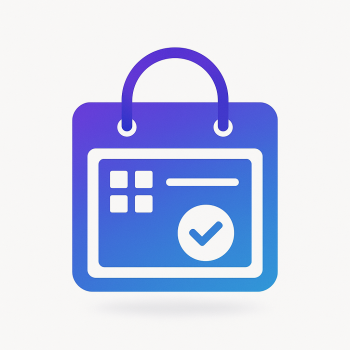Magento 2 and Omnichannel Retailing: Key Integration Strategies

Magento 2 and Omnichannel Retailing: Key Integration Strategies
Omnichannel retailing is no longer a luxury—it's a necessity. Customers expect seamless shopping experiences across all touchpoints, whether they're browsing on mobile, shopping in-store, or clicking through your Magento 2 store. The challenge? Making sure all these channels work together smoothly.
In this post, we'll explore how Magento 2 can power your omnichannel strategy and share practical integration approaches to unify your sales channels, inventory, and customer data.
Why Omnichannel Matters for Magento 2 Stores
Modern shoppers don't think in terms of "channels"—they just shop. They might:
- Browse products on Instagram
- Check reviews on your Magento store
- Visit a physical store to see the item
- Finally purchase via mobile app
Magento 2's flexible architecture makes it ideal for connecting these dots. But to make it work, you need smart integrations.
Core Omnichannel Integration Points in Magento 2
1. Unified Inventory Management
Nothing frustrates customers more than seeing "in stock" online only to find the item unavailable in-store. Magento 2's Multi-Source Inventory (MSI) helps solve this:
// Sample code to check inventory across sources
$productId = 123;
$inventory = $this->stockRegistry->getStockStatus($productId);
if ($inventory->getStockStatus()) {
// Product is available
$sources = $this->sourceRepository->getList()->getItems();
foreach ($sources as $source) {
$qty = $this->getSourceItemData->execute($productId, $source->getSourceCode());
echo "Available at {$source->getName()}: {$qty} units";
}
}
Pro Tip: Consider extensions like Magefine's Inventory Sync for real-time updates across POS systems and warehouses.
2. Customer Data Synchronization
Your CRM, email marketing platform, and Magento 2 should share customer data seamlessly. The Magento 2 REST API makes this possible:
// Fetching customer data via API
GET /rest/V1/customers/search?searchCriteria[filterGroups][0][filters][0][field]=email&searchCriteria[filterGroups][0][filters][0][value]=customer@example.com
// Response includes purchase history, preferences, etc.
{
"id": 123,
"email": "customer@example.com",
"purchase_history": [...],
"store_credit": 50.00
}
This data can power personalized experiences across all channels.
3. Order Management System (OMS) Integration
An OMS acts as the brain of your omnichannel operations. Key integration points:
- Real-time order status updates
- Flexible fulfillment options (BOPIS, ship-from-store)
- Returns management across channels
Here's how to push Magento 2 orders to your OMS:
// Observer for new orders
public function execute(\Magento\Framework\Event\Observer $observer)
{
$order = $observer->getEvent()->getOrder();
$omsData = [
'order_id' => $order->getIncrementId(),
'items' => $order->getAllItems(),
'shipping_address' => $order->getShippingAddress()->getData()
];
// Send to OMS API
$this->omsClient->createOrder($omsData);
}
Key Technologies for Omnichannel Success
PWA Studio for Mobile Consistency
Progressive Web Apps deliver app-like experiences on mobile browsers. Magento's PWA Studio helps create:
- Offline-capable shopping experiences
- Push notifications for cart reminders
- Fast loading speeds (critical for mobile)
Headless Commerce for Flexibility
Going headless with Magento 2 means:
- Your frontend is decoupled from the backend
- Easier to maintain consistent experiences across devices
- Faster updates to individual channels
Basic headless setup with GraphQL:
# Query for product data
query {
products(filter: {sku: {eq: "24-MB01"}}) {
items {
name
price {
regularPrice {
amount {
value
}
}
}
media_gallery {
url
}
}
}
}
Common Omnichannel Challenges (and Solutions)
Challenge 1: Disconnected Data
Solution: Implement a customer data platform (CDP) that syncs with Magento 2 via API.
Challenge 2: Inconsistent Pricing
Solution: Use Magento 2's tier pricing with channel-specific rules:
// Sample price rule for mobile channel
$rule = $this->ruleFactory->create();
$rule->setName('Mobile App Discount')
->setCustomerGroupIds([1]) // Retail customers
->setDiscountAmount(10)
->setSimpleAction('by_percent')
->setConditions([
'channel' => 'mobile_app' // Custom attribute
]);
$this->ruleRepository->save($rule);
Challenge 3: Fragmented Analytics
Solution: Centralize reporting with extensions that pull data from all channels into Magento.
Getting Started with Your Omnichannel Strategy
- Audit your current channels - Identify gaps in customer experience
- Prioritize integrations - Start with inventory sync, then move to customer data
- Test rigorously - Ensure updates in one channel reflect everywhere
- Train your team - Staff should understand the omnichannel workflow
Remember: Omnichannel isn't about being everywhere—it's about being consistent wherever you are.
Need help with your Magento 2 omnichannel setup? Check out our integration extensions designed specifically for seamless retail experiences.





